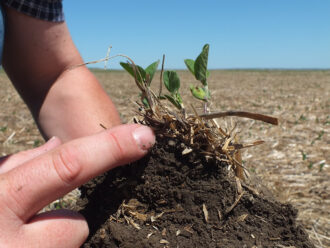Farmers and ranchers are increasingly interested in conservation practices to strengthen soil health and improve water quality for present and future generations. Conservation practices can also help farmers improve their profitability in the face of increasingly volatile weather and uncertain market conditions.
Some farmers and ranchers hesitate to adopt these practices because of perceived financial risks or uncertainty about what they would mean financially for their operations.
Developed by the Soil Health Nexus with support from an NCR-SARE Professional Development grant, this booklet aims to inform farmers’ key partners—in particular, farm business management educators, agricultural lenders, and conservation educators and professionals—about the financial costs and benefits of conservation agriculture practices to assist their work with farmers. Strengthening these professionals’ knowledge about the financial implications of conservation agriculture will enable them to engage farmers in making informed decisions to optimize the sustainability and profitability of their operations.
The booklet focuses on four of the most common conservation practices: cover crops, reduced tillage, nutrient management, and managed grazing. The sections for each of these practices are also available as separate fact sheets.
- Download The Financial Impacts of Cover Crops
- Download The Financial Impacts of Reduced Tillage
- Download The Financial Impacts of Nutrient Management
- Download The Financial Impacts of Managed Grazing
- Download the booklet.
The information included in this booklet was gathered through a review of existing research on the financial impacts of conservation practices on production systems in the Upper Midwest region. The research includes national statistics from the United States Department of Agriculture’s (USDA) Census of Agriculture and the National Cover Crop Surveys. Sources at the regional and state level come from Extension reports, multi-farm case studies, on-farm comparison trials, and state Department of Agriculture reports.
URL: https://soilhealthnexus.org/the-financial-implications-of-conservation-agriculture/
Want more information? See the related SARE grant:
This material is based upon work that is supported by the National Institute of Food and Agriculture, U.S. Department of Agriculture through the Sustainable Agriculture Research and Education (SARE) program. Any opinions, findings, conclusions, or recommendations expressed in this publication are those of the author(s) and should not be construed to represent any official USDA or U.S. Government determination or policy.
